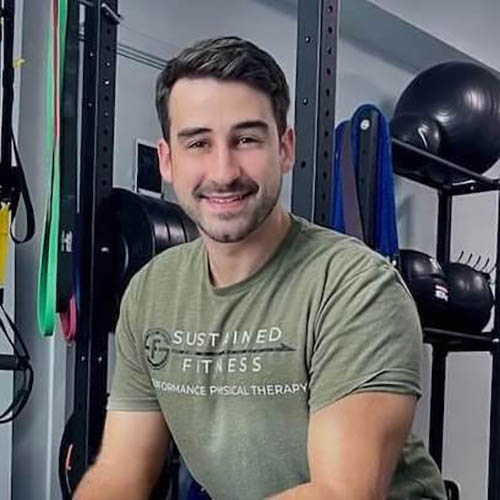Introduction Upper back pain can be a persistent issue that disrupts everyday activities and reduces the quality of life. This guide delves into how to relieve upper back pain through physical therapy, detailing exercises and techniques specifically targeted to ease discomfort and improve mobility. Understanding Upper Back Pain What Is Upper Back Pain? Upper back …
How to Relieve Upper Back Pain with Physical Therapy

Introduction
Upper back pain can be a persistent issue that disrupts everyday activities and reduces the quality of life. This guide delves into how to relieve upper back pain through physical therapy, detailing exercises and techniques specifically targeted to ease discomfort and improve mobility.
Understanding Upper Back Pain
What Is Upper Back Pain?
Upper back pain involves discomfort or pain in the area between your neck and your rib cage, which encompasses the thoracic vertebrae. This area is critical for overall upper body stability but is susceptible to pain from a variety of medical conditions or muscle overuse.
What Are The Causes Of Upper Back Pain?
Upper back pain stems from various sources, and a thorough medical history is crucial to identify the root causes. Common culprits include:
- Muscle Strain And Overuse: Tight muscles resulting from overuse or incorrect posture can cause significant discomfort.
- Poor Posture And Ergonomics: Spending long periods in a poor starting position can lead to chronic pain in the upper back.
- Spinal Abnormalities And Conditions: Conditions such as a type of arthritis affecting the spine or issues with connective tissue can cause pain along the spinal nerves.
- Trauma And Injury: Injury to the soft tissues in the upper back, such as during a fall or accident, can lead to severe pain.
- Stress And Emotional Factors: Stress can cause the muscles in the upper back to become tense, often requiring relaxation exercises to mitigate the pain.
What Does Upper Back Pain Feel Like?

The sensations associated with upper back pain are diverse and can signify different underlying conditions:
- A Burning or Sharp Pain: Often sharp and intense, this type of pain may signal nerve involvement or a specific condition impacting the rib cage or spinal nerves. It might suggest acute issues that warrant immediate attention, especially if it disrupts daily activities.
- An Achy, Throbbing Pain: This dull, persistent pain typically results from prolonged periods of inactivity or poor posture, suggesting weak or overstrained muscles. It can feel like a constant, nagging discomfort that intensifies with certain movements or positions.
- Muscle Tightness or Stiffness: Commonly stemming from a limited range of motion or infrequent use, this symptom involves a reduction in muscle flexibility that can make movements stiff and painful. It often leads to a sensation of muscles being constricted or difficult to move freely.
- A Radiating Pain Along A Nerve: This type of pain travels from the upper back to other areas, such as the left shoulder or down the arm, reflecting the path of the affected nerve. It’s a clear sign that nerve tissues may be compressed or irritated, manifesting in pain that moves or spreads across areas.
- Tingling, Numbness, or Weakness: These symptoms indicate potential neurological impacts and are critical to address with healthcare professionals. Tingling or numbness suggests a disruption in nerve function, while weakness in the arms or hands may indicate more severe nerve compromise or damage.
Recognizing and understanding these symptoms is crucial for effective diagnosis and management, guiding appropriate treatment strategies to alleviate pain and restore function.
The Role Of Physical Therapy For Upper Back Pain
Physical therapy for upper back pain is an effective approach that integrates an understanding of the patient’s specific medical history to address and alleviate pain.
Benefits Of Physical Therapy For Upper Back Pain
Physical therapy offers comprehensive benefits that enhance mobility and ease pain through:
- Pain Relief And Improved Functionality: Gentle stretching and strength exercises can restore function and reduce discomfort.
- Strengthening And Flexibility: Exercises designed to improve the strength of weak muscles and the flexibility of tight muscles can greatly alleviate symptoms.
- Posture Correction And Ergonomic Education: Learning to maintain a neutral position during everyday activities can prevent further pain.
- Individualized Treatment Plans: Each plan is tailored to the patient’s specific symptoms and medical condition.
- Education And Self-Management Techniques: This includes the use of heating pads, deep breathing exercises, and counter-pain medications under medical advice.
Physical Therapy Exercises For Upper Back Pain Relief-098765
Incorporating regular exercises for upper back pain into your routine is crucial for managing upper back pain. Key workouts include:
- Neck Roll: A simple exercise that involves a gentle circular motion to relieve neck pain and improve flexibility.
- Shoulder Roll: Helps to loosen up the upper back and alleviate tension.
- Arm Circles: A straightforward, aerobic exercise that enhances the range of motion in the upper body.
- Overhead Arm Reach: A deeper stretch that targets the muscles around the rib cage and upper back.
- Plank: Strengthens the core and supports the upper back, reducing strain.
- Push-Ups – Wall Push-Ups: These strengthen the chest and back muscles, crucial for supporting the spine.
- Reverse Fly: Focuses on the rear shoulder and upper back, important for counteracting poor posture.
- Shrugs: Targets the muscles around the neck and upper shoulders.
- Child’s Pose: One of the best upper back pain relief exercises that extends the spine and relaxes the muscles of the upper and middle back.
Physiotherapy Treatments For Upper Back Pain

Advanced treatments in physiotherapy provide targeted relief and promote healing for upper back pain:
- Hot And Cold Packs: These aid in reducing inflammation and relaxing muscle stiffness.
- Manual Therapy: Techniques including massages and mobilization to improve movement and decrease pain.
- Ultrasound / Modalities: Used to promote blood flow and heal deep tissues.
- Functional Dry Needling / Acupuncture: Targets specific points to relieve pain and tension in the muscles.
Revitalize Your Upper Back with Sustain Physical Therapy and Performance
At Sustain Fitness and Physical Therapy, we understand the challenges that come with managing back pain. Our expert team is committed to delivering comprehensive physical therapy solutions tailored to alleviate your pain and enhance your overall health performance. By integrating cutting-edge techniques and personalized care plans, we aim not only to relieve your symptoms but to address the root causes of your discomfort, ensuring long-term relief and improved quality of life.
Conclusion
Physical therapy stands out as an effective approach to managing upper back pain, offering a route to not only alleviate pain but also to improve overall back health and functionality. By understanding the underlying causes, engaging in specialized exercises, and applying targeted treatments, individuals can see significant improvements in their upper back conditions.
FAQs
Can a physical therapist help with upper back pain?
Yes, a physical therapist can significantly help with upper back pain by diagnosing the cause, providing targeted treatments, and teaching exercises that improve strength and flexibility, thereby reducing pain and enhancing mobility.
What can a physio do for upper back pain?
A physiotherapist can offer manual therapy, design personalized exercise programs, and provide education on posture and ergonomics to alleviate upper back pain. They also use modalities like ultrasound and dry needling to treat pain and facilitate healing.
How do you rehab your upper back?
Rehabbing your upper back typically involves a combination of strengthening exercises, flexibility routines, and possibly manual therapies. A structured program might include exercises like rows, stretches, and core strengthening, along with professional guidance to ensure proper technique and progression.
Dr. Adam Babcock PT, DPT
“We Help Active Adults Quickly Recover From Pain Or Injury So They Can Stay Active, Get Back To What They Love To Do, and Do It For Decades”






